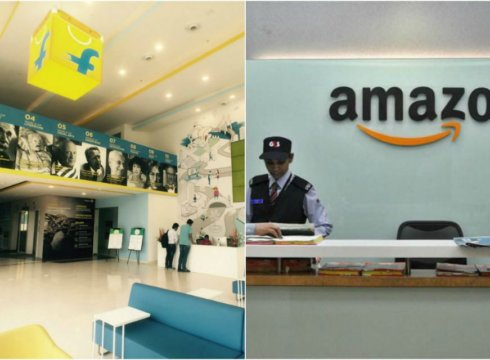Inc42 Daily Brief
Stay Ahead With Daily News & Analysis on India’s Tech & Startup Economy
The Ipsos Most Influential Brand Study for ten most influential brands in the country evaluates over 100 brands across 21 countries and involved 36,600 interviews. In context of India, the top five in the list constituted international companies viz. Google, Facebook, Gmail, Microsoft, and Samsung. WhatsApp holds the sixth position while SBI and Airtel secures the last two positions respectively.
The most interesting is to see that the study placed Flipkart at seventh position while Amazon at eighth.
“Brands are more than just corporate logos. They have meaning, personality, even attitude. When it comes to asking which brand is the most trustworthy, has the most presence or is most engaging, the answer can be a personal one. This is because we increasingly identify with, relate to and define ourselves by them, which gives brands something we can measure: influence,” Amit Adarkar, said Managing Director – Ipsos, India.
The Ipsos Most Influential Brand Study evaluates over 100 brands across 21 countries and involved 36,600 interviews. In India, where the study was conducted for the first time, we canvassed the country to ask more than 1,000 Indians online to assess more than 100 brands.
Flipkart and Snapdeal, along with Amazon, have dominated India’s $23 Bn (Rs 1.5 lakh crore) ecommerce market. Together, their GMV’s in 2015 was $13.8 Bn against offline retailers’ GMV of $12.6 Bn. However, these firms are yet to show paths to profitability and right now facing constant pressure from their investors and shareholders.
Though Amazon is a fairly new entrant in Indian market, considering its dominance in other markets, it posed to be an equivalent competitor, like Myntra and Snapdeal. “Amazon has actually eaten away a lot of market share of Flipkart and it doesn’t seem that Flipkart is in a commendable position as compared to Amazon. Snapdeal, while giving huge competition to Flipkart, is also eating into its business. If you look at the last round of Flipkart, it was a flat round. The company doesn’t seem to be doing that well the way it did in 2014,” said a venture capital source to Financial Express.
While all three appear largely similar to the average customers, there are subtle differences in offerings and business philosophies. As mentioned by Mahesh Murthy, Managing Partner at Seedfund, “People don’t go to Amazon for a crazy sale. But they do to Flipkart and Snapdeal. Amazon’s philosophy is to offer a better product at everyday low price. But Flipkart and Snapdeal are seen as deep discounting sites.”
Here are few numbers showcasing the online battle between the top ecommerce firms:
- According to internet analytics firm comScore, Amazon India saw over 200 Mn visitors on its web and mobile sites in October 2015. For the same period, Flipkart saw 164 Mn visitors on its web and mobile sites combined, while Snapdeal saw 109 Mn visitors.
- Two of its main entities Flipkart India and Flipkart Internet incurred a loss of INR 2,000 crore in the year ended March 2015, according to the filings with the Registrar of Companies
- Amazon India reported a six-fold jump in sales to INR 1,022 crore with losses soared to INR 1,723.6 crore for the year ended 31 March 2015. This shows both the company’s rapid expansion as well as its heavy spending on discounts, advertising and logistics.
- In February 2016, a mutual fund managed by Morgan Stanley has marked down the value of Flipkart’s shares by 27%, signalling that global investors believe India’s largest internet company is overvalued. This led to a drop in the firm’s worth to about $11 billion from its stated valuation of $15.2 Bn.
- In terms of market share, however, Flipkart still is the leader dominating 45% market share followed by Snapdeal with 26% and Amazon with 12%
Well, these are all numbers and numbers can always fluctuate up and down. With ecommerce market estimated to reach $119 Bn by 2020, number of online shoppers will increase from 50 Mn in 2015 to 320 Mn as per a Morgan Stanley report. No wonder, if the coins flip to entirely different scenario in next two years.
Note: We at Inc42 take our ethics very seriously. More information about it can be found here.


